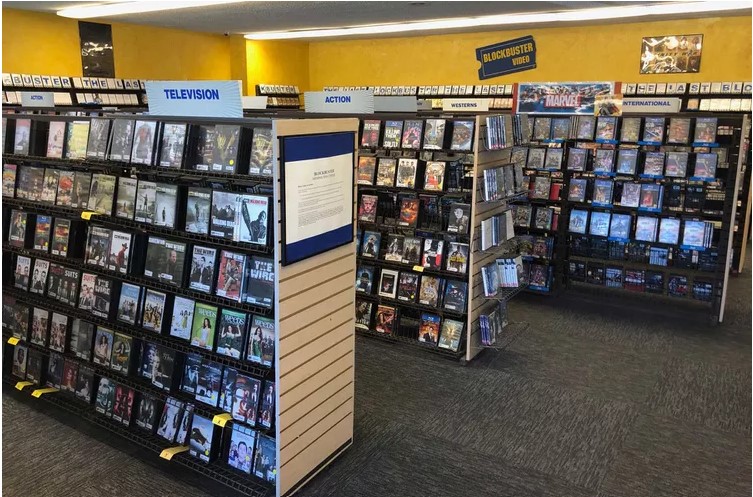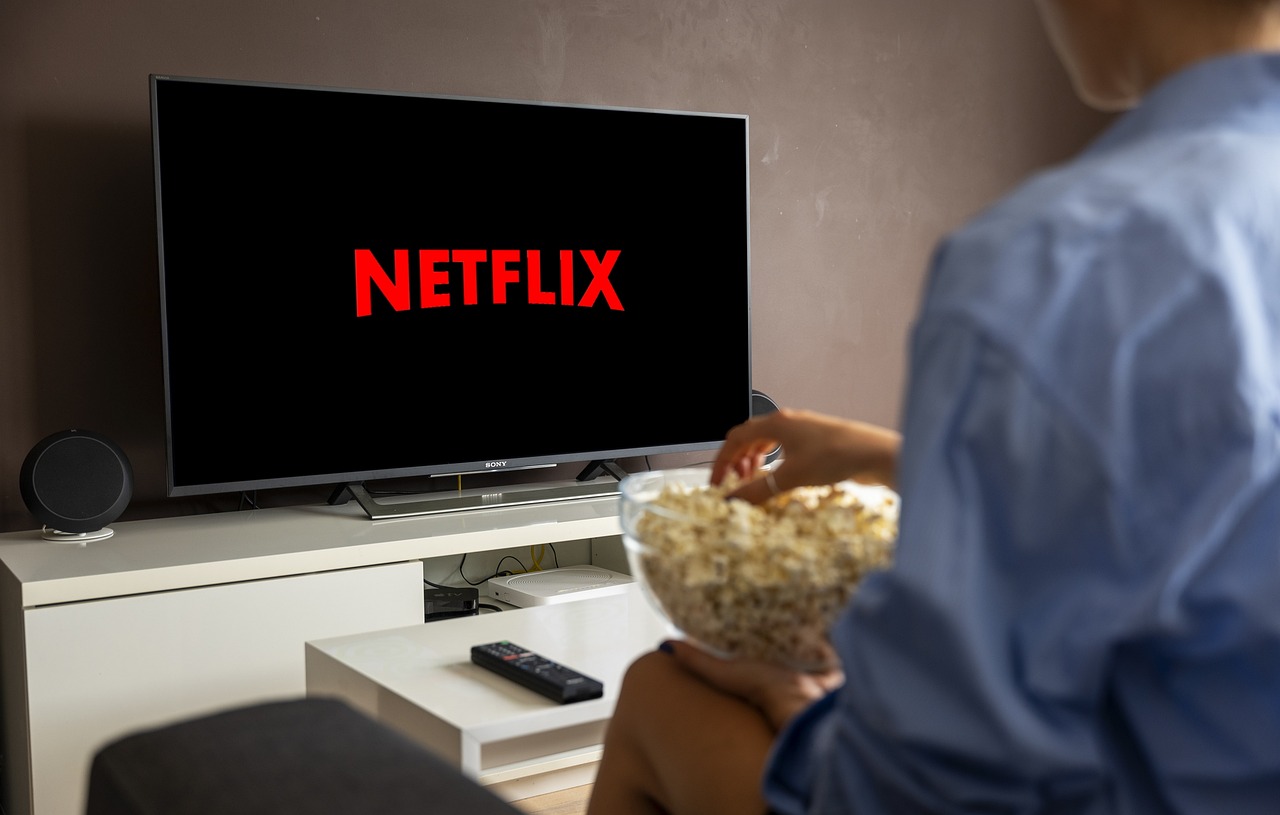Netflix Inc. was the brainchild of Reed Hastings and Marc Randolph, which kicked off as a media-streaming and video-rental company. It launched at a time when Blockbuster, another competition in the home movie segment and video game rental service provider, was the undisputed king of the video rental industry.
A background of Blockbuster:
Between 1985-1992, Blockbuster (incorporated in 1985) ran brick-and-mortar stores in over 2,800 rental stores worldwide. They quickly became pervasive from one store in Dallas to throughout the world. The company reached its zenith in 2004 with approximately 84,300 employees at over 9000 locations. Unfortunately, the company died a natural death in 2010 and filed for bankruptcy. By that time, it had 1,700 stores left, and down the lane in the next decade, it had only a single operating store in the town of Bend, south of Portland.

Netflix Experimentation With Services:
In the late 1990s and early 2000s, Netflix put up a tough fight against Blockbuster, nothing short of a David vs. Goliath story!
Because of the metamorphic changes underscoring the video/home entertainment industry, in 1997, when Video Home System was the industry standard, Reed Hastings brought in the services of DVD subscription by mail. What stood Netflix apart was – NO LATE FEES. Unlike Blockbuster, Netflix did not boost revenues by imposing heavy late fees. Netflix allowed their customers to finish their DVDs and get another upon completion.
In 1999, Netflix embarked on an online subscription service model through the Internet. Subscribers had to pick their favorite movies and television titles from their website, after which they received them on DVDs. For this, the firm charged a fixed monthly cost for as many movies as consumers wanted each month. There was, however, a bar to total DVDs people ordered at any given time according to their membership levels. It is worth mentioning that, even during those days, Netflix contained tens of thousands of entertaining options in its library.
Even though Netflix was basking in the glory of its unique proposition, Blockbuster, and Walmart were still a threat. Blockbuster stepped into renting DVDs through in-mail services, which was an easy nut to crack for them, given their pervasive network. They understood well the loss-leading pricing model of Walmart, which means to rent DVDs at cheaper rates to bring customers to their stores and throw more items in their carts.
Thus, Netflix endeavored online streaming. It invested heavily in an algorithm to gauge viewers’ preferences. It, in turn, helped them streamline content distribution through the Internet. That was the precursor to modern-day Netflix!
Internet Based Streaming:
In 2007, Netflix came up with a facility to provide their customer to stream movies and television shows directly to their homes via the Internet. For most subscription plans, it made the streaming service unlimited.
On the side note, within ten years of launching the DVD shipping model, Netflix carried out the business of streaming media and videos on demand. The service gradually plunged into creating original content, debuting its first TV series, the political drama “House of Cards,” in 2013, followed by “Orange Is the New Black,” “The Unbreakable Kimmy Schmidt”, and “Grace and Frankie,” amongst others.
To set foot in the market and percolate through more and more customer base, it inked pacts with manufacturers of various consumer electronics products, including video game consoles and Blu-ray disc players, in an attempt to make Netflix’s on-demand video streaming become a reality in connected devices. In 2008, Netflix partnered with LG, offering the first Blu-ray player with an internet device that could stream Netflix library.

“Consumers want more content,” Allan Jason, LG’s vice president for sales and marketing in its digital media division, said. “Netflix has a catalog of over 12,000 movies that can be streamed. We said, ‘This makes the perfect marketing partnership with LG.”
In 2010, Netflix launched a streaming-only plan entailing unlimited streaming service but minus DVDs. Then, there was no looking back for the OTT giant. It crossed borders and reached Canada in 2010, Latin America and the Caribbean in 2011, and the United Kingdom, Ireland, and Scandinavia the following year. In 2016, it debuted in India. Now, Netflix is available in more than 190 countries, just three down from countries that are members of the United Nations.
Controversies & Clarifications:
From the word go, CEO Reed Hastings had told several media outlets about impregnating the idea of Netflix after Blockbuster levied a $40 late fee on him for “Apollo 13.”
However, co-founder Marc Randolph, who left the company in 2002, rebutted the truth of any such story and called it fiction while answering a question in an interview with CNET in October 2012.
According to Randolph’s version, he and Hastings wanted to make “the Amazon.com of something” in 1997, The Washington Post reported, bursting the myth.
Netflix mailed rental DVDs for over 25 years before finally calling it off in 2023. During these years, it created a 40 million unique subscriber base and shipped over 5 billion DVDs, according to the company.
It pioneered its journey by shipping the DVD of “Beetlejuice” on March 10, 1998, and bringing down the curtains with True Grit (2010).
Materializing Planning:
Almost two decades before, Hastings canvassed his belief in streaming video. In an as-told-to article for Inc. in 2005, Hastings gave a heads-up about the Netflix plans to go internet-based, which became a reality in two years following the publication. The company rolled out streaming content in 2007.
“Movies over the internet are coming, and at some point, it will become big business,” his words in the Inc. at the time. “We started investing 1 percent to 2 percent of revenue every year in downloading, and I think it’s tremendously exciting because it will fundamentally lower our mailing costs. We want to be ready when video-on-demand happens. That’s why the company is called Netflix, not DVD-by-Mail.”
Interestingly, in the same Inc. article, Hastings conceded to having no flashy origin story of Netflix.
“Netflix was originally a single rental service, but the subscription model was one of a few ideas we had — so there was no Aha! moment,” he said.
Strive For Subscribers:
With the rise of internet penetration globally and the springing up of other video-on-demand platforms, Netflix faces bottleneck competition across markets. To take on the competitors, such as Disney, HBO Max, and Amazon Prime, and bolster its subscriber base, Netflix, in 2023, decided to trim subscription costs in over 100 countries, stripping out India. As of the fourth quarter of 2023, Netflix had 260 million subscribers with the potential to gain more foothold in developing countries, which are price-sensitive. With hindsight, it changed the pricing policies to avoid precarious situations.

In 2022, Netflix had almost a million subscribers between April and July who ghosted it, which was for a consecutive second time. It was its maiden subscriber loss since 2011 in April. Contemporaneously, it was a colossal subscriber base erosion the streaming giant witnessed, with the US and Canadian subscribers opting out the highest, followed by Europe.
A Crusade For Capturing the Indian Market:
For the Indian market, in December 2021, Netflix slashed its India subscription plans by 20-60% to touch an untapped customer base. Netflix’s mobile-only plan came down to ₹149 a month from ₹199 per month earlier. Similarly, the basic plan allowing access to content on any single device was heavily waivered at ₹199 from ₹499 earlier.
Interestingly, Netflix’s strife with Indian consumers has stayed enigmatic. Early on in its Indian business trajectory, Co-Founder Reed Hastings betted the next 100 million subscribers to come from India. However, from the total user base of 247 million subscribers globally as of September 2023, India is estimated to contribute less than 7 million subscribers in India, as per Alliance Bernstein report in October.
Netflix cracked down on password sharing in several countries to bolster its topline and boost its customer base.
Back to Basics, with a Twist– Brick & Mortar Stores!
More than a decade after Blockbuster’s fall, Netflix is gearing up to launch new brick-and-mortar locations in 2025. It would not be a symbolic reminiscence of the DVD buying experience but an exclusive immersive walk-through shopping merchandise, dining at themed restaurants, seeing live entertainment, and participating in immersive experiences based on hit Netflix shows.
The first two locations would be United States-based, reports Bloomberg’s Lucas Shaw. If that hit, Netflix would take this concept to other countries!

